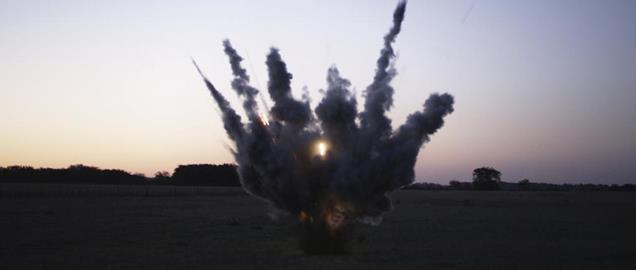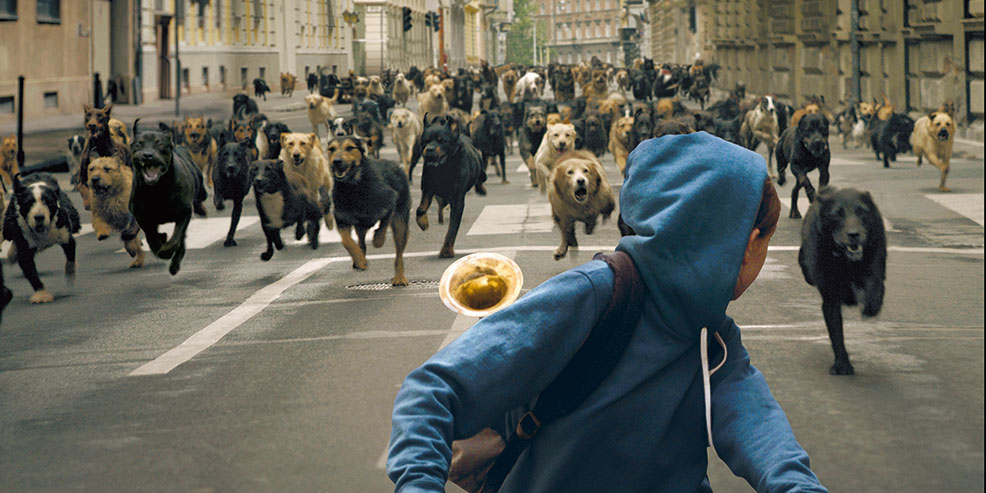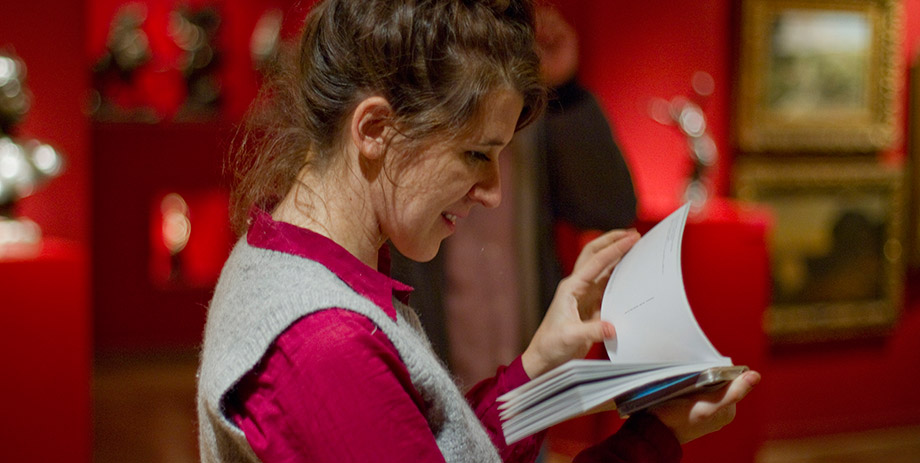If you're going to straight up copy the opening scene of another, more famous film, you better to something with it. When I saw the opening of Parabellum, it was immediately clear that the director was copying the opening of Reygadas' Silent Light. A shot of the sky at dawn, slowly cirkling round, through trees, coming to a stop on a field. Something has to happen. Clanging sounds rise: Clangclangclang and then BAM! A punchline!
Another joke: An early scene simply shows the boring office life of the main character, but violent, significant eposition is heard on the radio. 'Oh' I thought. 'Smart way to explain the backstory. Clearly the point of the scene can't be this dull delivery of paperwork.' CUT! After office work, but in the middle of radio sentence, meaning we never really learn exactly what is going on.
Something is clearly happening, though. The mood is sinister. Our man dream of fireworks shooting up from all over Buenos Aires. He leaves his world behind, and travels to a camp to learn survival skills. Here, the imagery truly comes into it's own. Turns out director Lukas Valenta Rinner was born in Austria, which seems fitting, since the scenes at the secluded survival camp is so reminescent of the resort and the weight-loss camp from Ulrich Seidl's Paradise's Love and Hope. Very rectangular framing, much about ordered, regimented hours and classes, much droll comedy in the pale citizens all trying to do something out of the ordinary in exactly the same way.You've kinda seen it before, but it's very well made and very funny. I might have hoped for just a tiny bit more, though.
I often decry when films let such superfluous stuff like 'plot' or 'character depth' detract from the important stuff like sounds and images. But at times, a film has such a masterful grasp on it's style that it can withstand a whole lot of detracting. Such a film is Parabellum. Seidl is pretty famous for not holding back with his characters, but there is till often fleeting glimses of sweetness in his films - it's often what his characters are searching for. Parabellum could have used a bit like that. I'm not looking for a conventional love story, but all dialogue in the film is instructions and commands,and it's awesome and funny, so I have fath that Rinner could have written a few good conversations as well.
Something to make the characters more livid, so that we care more in the third part of the film, where practice and reality becomes blurred as the trainees must find their own way up a river - the horror! This is where the payoffs are, but they could have hit harder. The imagery remains great throughout, and culminates in an absolutely stunning final shot. There is no doubt that this debut director can make film. I'll watch whatever he does next, without a doubt. A longer film, with just a bit more variation, could be a major arthouse triumph!
White God (Kornél Mondruczó, 2014, Hungary)
Hey, did you know that 'God' is 'dog' backwards? Think about it!
Un Certain Regard har a pretty legendary selection in 2014 with Amour Fou, Force Majeure, Jauja and Bird People. And White God won. So I was quite curious if this could really be a deserving winner of that competion. And no. It's not. Not at all.
I get why this gets attention. It has spectacular dog-imagery attained through practical effects. But honestly, that's all it has and it's not the most flexible of imagery. It looks awesome every time, but the filmmaker doesn't even try to vary it enough to fill the runtime. There is a great intro with slomo and music. And then there's the attack in the final 20 minutes.
And the rest of the time, it quite honestly seems as if the filmmaker doesn't know what to do. The filmmaking is competent arthouse but still awfully color-coded into teal and orange. There's a bunch of silly human stories about a teenage girl and boys and her asshole conductor and none of it is interesting. Worst of all, the main dog gets a whole character arc to explain his feral devolution, and I swear it contains actual references to Disney films like Lady & the Tramp and Oliver & Co.
Disney can be awesome. Frozen is a masterpiece. But you can't treat the dogs like anthropomorphized little people without it hurting the sublime savagery of the final part. Think of The Birds. The birds in The Birds are terrifying because they attack without us knowing why. The birds in The Birds wouldn't be half as terrifying if we'd spent 40 minutes seeing the leader bird being treated like a bird. It's dumb. And the specificity also takes away from the metaphoric utility of the creatures. Now think of Bird People. The fact that the main character turns into a bird in that film is less overtly impressive than what has been done in White God, but filming as a bird can be varied for a long time. It doesn't start as interesting as an army of dogs, but it also doesn't become tired as fast. So in the end it's better.
This was a dissapointment. I'm guessing this won't stand the test of time. It's typical 'can't believe they did this'-cinema: You see it once and it's cool, then there's no reason to watch it again.










